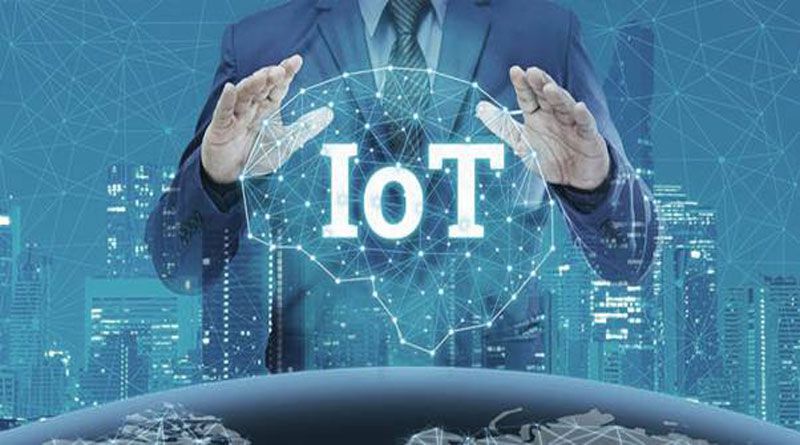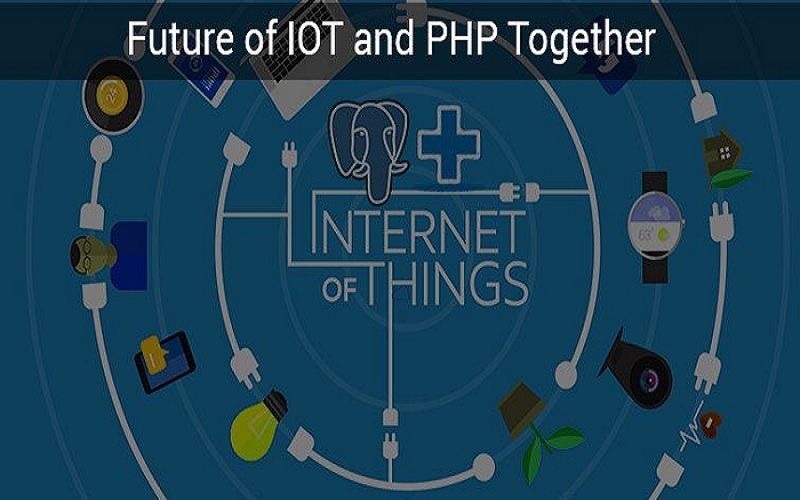While many businesses unanimously agree that IoT is the technology of the future and invest big sums in its development and expansion, its deployment and implementation can generate hot debate among software developers.
The main question is what programming language to choose for building effective, secure, and powerful IoT solutions. Some software developers choose PHP for their IoT development projects as it is a time-tested programming language well-suited for building web apps and IoT server-side layers.
In this article, we will have a close look at IoT technology and PHP programming language and explain which PHP features make it a great choice for building IoT software.
Introduction to PHP
PHP is a general-purpose open-source scripting language. It first appeared in 1994 and since then it remains one of the most popular programming languages for web app development. It allows software developers to build a web application of any complexity be it dynamic or static.
According to Web Technology Surveys, 78.9% of websites on the global Internet run on PHP, including Yahoo, Facebook, Wikipedia, Flickr, WordPress, MailChimp, and many others.
There are a number of reasons why software developers choose PHP:
- Simplicity
Many newcomers choose PHP as a starting point in IT. It is easy to master, therefore, it allows beginners to write simple scripts just in two hours of learning it.
- Flexibility
Unlike JavaScript which runs on the client-side, PHP code is executed on the server-side and it never reaches a user’s device. This feature makes PHP a platform-independent language.
PHP generates HTML files and sends them to a user’s browser. As a result, the user’s device runs only HTML being unaware of the underlying PHP code.
- Speed
PHP is an integral part of the LAMP stack that includes Linux, Apache, MySQL, and PHP. The LAMP stack is one of the most popular and optimal solutions for building web applications. When PHP is used as a part of LAMP its performance is much faster than the most sсripting languages like Microsoft ASP and JSP.
- Compatibility
PHP is a versatile back-end language it can run on the most known operating systems such as Linux, Unix, Windows, macOS, etc. It supports a wide range of servers like Apache, IIS, etc. and can use a variety of protocols to talk to other servers such as LDAP, POP3, HTTP, COM, and many others.
Moreover, PHP easily correlates with more than 20 databases, including the most popular and open-source ones. MySQL, CouchDB, PostgreSQL, Oracle are among them. They help software engineers create modern dynamic web sites.
- Applicability
Although PHP is largely used for web development, software engineers can use it to effectively solve a vast number of issues. For example, PHP can be applied for Robotics, Artificial Intelligence, Big Data, Internet of Things, and other solutions.
Introduction to the Internet of Things
The Internet of things (IoT) represents a network of various mechanical and digital machines that communicate with each other using IP protocols. It means that these devices can transfer data over the network without any human intervention.

An IoT ecosystem comprises a variety of smart devices that are connected to a web. They include measuring mechanisms, data processors, actuators, and communication hardware.
Here is how IoT technology works:
- the data from the external environment is gathered and converted into the data suitable for transferring;
- the acquired data is sent into the main computer, it can be a cloud or a local device for data analysis;
- sometimes devices exchange their data directly and act according to the data they get from each other;
- some devices don’t collect any data but work as actuators, they change the conditions in a particular area if they receive this command from the main computer – for example, change or support temperature at a certain level;
- although IoT devices don’t require any human intervention, people can still interact with the devices – for example, they can set certain instructions or obtain statistical data.
IoT is a promising technology that is already successfully implemented by many businesses. Only in 2020, companies have invested in IoT $749 billion and the numbers are expected to reach $1.1 trillion in 2022.
Business Insider states that there are expected 41 billion IoT devices working in different parts of the world, while in 2019 there were about 8 billion devices. This impressive growth is explained by the rapid development of Blockchain and 5G technologies. They will go hand-in-hand with IoT making it more widespread and secure.
How to implement IoT in different areas:
- monitor various processes in business and everyday life, e.g. goods production and transportation, traffic state in cities, security systems in households, etc.;
- enhance the user experience, e.g. city navigation, connected cars, etc.;
- save time and money with fast data transferring and processing, staff hiring, and others;
- improve productivity with predictive maintenance and facilitated working conditions e.g. on farms or heavy industries;
- perform business analytics of IoT data to improve business processes and development of new business models;
- generate more revenue with improved workflow and its better monitoring.
How Do PHP and IoT Work Together?
PHP is widely implemented for creating web apps, therefore it could be an effective programming language for building IoT programs and web apps for IoT management as well. However, to develop IoT solutions PHP requires a bit more functionality. That’s why software developers have created PHPoC.
PHPoC (PHP on Chip) is a programming language and an IoT hardware platform. In short, PHPoC is an expansion of PHP on a small chip. With PHPoC software developers can build web apps and use it as a general-purpose programming language for IoT.
PHPoC descends from PHP and has a nearly identical to PHP syntax, however, it’s adapted for the embedded systems. PHPoC adds advanced functionality to interact with hardware peripherals like I/O, UART, I2C, SPI, ADC, TIMER/COUNTER, RTC, etc. It also includes basic interfaces that help to communicate with multiple devices, sensors, network interfaces using whether a wired or wireless LAN connection. Above all, it supports a variety of Internet protocols for establishing secure IoT networks.
PHPoC platforms can be utilized for various IoT needs such as:
- monitoring IoT sensors;
- peripheral device control;
- control of measuring mechanisms and actuators;
- establishment of communication via WebSocket;
- sending emails;
- database management, and much more.
Summary
The Internet of Things (IoT) is one of the newest technologies that can completely change people’s lives. Recently IoT started rapidly gaining its popularity due to the development of IoT supplementing technologies like 5G, Artificial Intelligence, Big Data processing, and Blockchain. All of them help IoT to become more widespread, powerful, and secure.
In the meanwhile, software developers have many ways to create IoT solutions. PHP development is one of the most effective ones. This time-proven programming language provides a special IoT extension PHPoC that enables software developers to build full-fledged, robust, and effective IoT solutions.

